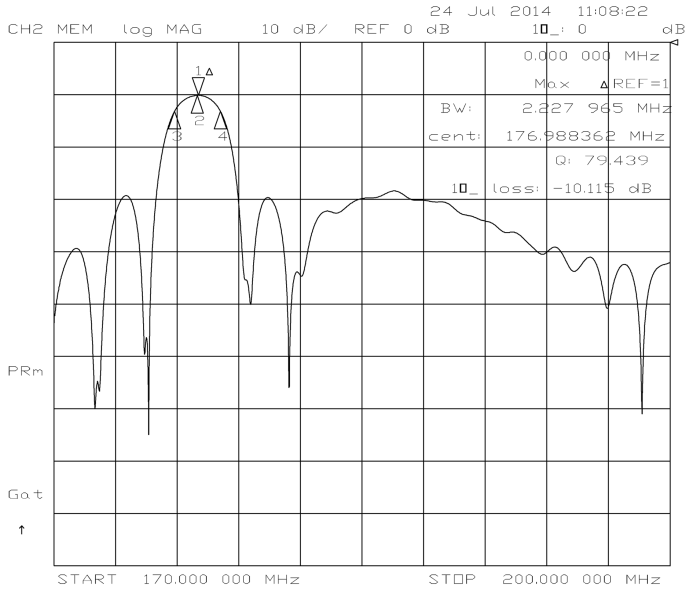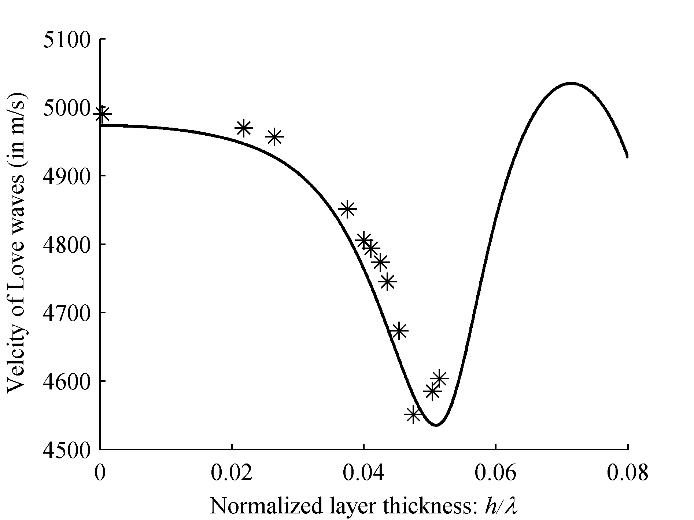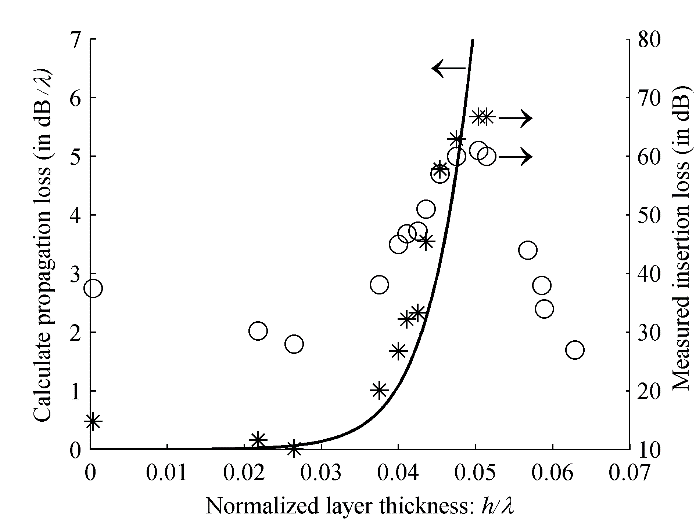A growing number of acoustic wave modes have been applied in various fields. Among the modes, Love wave sensors have been attracting much attention since they can be used for bio(chemical) sensing applications.
To achieve a higher sensitivity, many researchers have been working on developing Love wave sensors incorporating polymeric guiding layers. However, due to the viscoelasticity of polymers, most developed Love wave devices incorporate guiding layers are much thinner than the optimum thickness.
Recently, researchers with the Institute of Acoustics (IOA) of the Chinese Academy of Sciences have presented a detailed investigation on Love wave devices, providing a new explanation of the fundamental mode Love wave in devices incorporating thick viscoelastic layers.
Researchers first theoretically calculated the velocity and propagation loss of Love waves propagation in a device incorporating an ST-90˚X quartz substrate, two 28-μm periodic interdigital transducers, and SU-8 guiding layers.
As the SU-8 layer thickness increased, there was an inverse in the velocity of the fundamental Love mode (see Fig.2). Meanwhile, the propagation loss had been increased (see Fig.3).
The experimental devices consisted of an ST-cut and 90˚X-propagate quartz substrate with two lithographically defined Al (200 nm) interdigital transducers. A guiding layer was deposited on the device surface by spin coating a solution of SU-8 2050 (with volume ratio of 1:3 to the diluent agent). The spin speed was set from 1000 to 5000 rpm to achieve different layer thicknesses. The frequency response was measured by using an HP8753D network analyzer.

Fig. 1 Frequency response of the LW device coated a 0.74 μm thick SU-8 layer (Image by IOA).
There were two obvious signals in Fig. 1. One was at ~177.0 MHz (corresponding speed of 4956.6 m/s), caused by the fundamental mode of Love waves. Another was distributed between 182 ~ 191 MHz 5096 ~ 5348 m/s), probably caused by bulk waves.
Fig. 2 and 3 showed the calculated and experimental velocities and losses of the fundamental mode Love wave.
As in the relative thickness h/λ increased, the velocity reducing was speeded up, proving an optimum region to achieve a large mass loading sensitivity. When h/λ exceeded 0.05, the reducing decreased rapidly and even a raising velocity was obtained as the layer was further thickened.
When h/λ < 0.03, the experimental insertion loss decreased. The gain produced by enlarging the electromechanical coupling factor was larger than the increasing propagation loss.
As h/λ > 0.05, the propagation loss increased at an accelerating rate while the electromechanical coupling factor started to be decreased. Thus, the device insertion loss increased very rapidly and soon the signal of Love waves was too weak to be detected.
The insertion loss of bulk waves was shown as circles in Fig. 3. When h/λ < 0.05, the insertion loss of bulk waves also first decreased and then increased, which was similar to that of Love waves.
When h/λ > 0.05, the insertion loss quickly increased with thickening the guiding layer. It should be noted that when h/λ > 0.043, the insertion loss of bulk waves was less than that of Love waves. This phenomenon was easily misunderstood a start for the first higher order Love mode.
Results and discussions presented in this research will be helpful in analyzing and optimizing the performances of Love wave based sensors incorporating polymeric layers.
Funding for the research came from the National Natural Science Foundation of China (No. 11104314).

Fig. 2 Theoretical and experimental velocity of the fundamental Love mode (Image by IOA).

Fig. 3 Theoretical propagation loss (solid line) of the fundamental Love mode and measured insertion loss of Love waves (asterisks) and bulk waves (circles) (Image by IOA).
References:
LIU Jiansheng, WANG Lijun, HE Shitang. On the Fundamental Mode Love Wave in Devices Incorporating Thick Viscoelastic Layers. Chinese Physics Letters (Vol. 32, No. 06: 064301, 13 May 2015). DOI: 10.1088/0256-307X/32/6/064301
Contact:
LIU Jiansheng
Institute of Acoustics, Chinese Academy of Sciences, 100190 Beijing, China
Email: liujs98@hotmail.com or liujiansheng@mail.ioa.ac.cn


